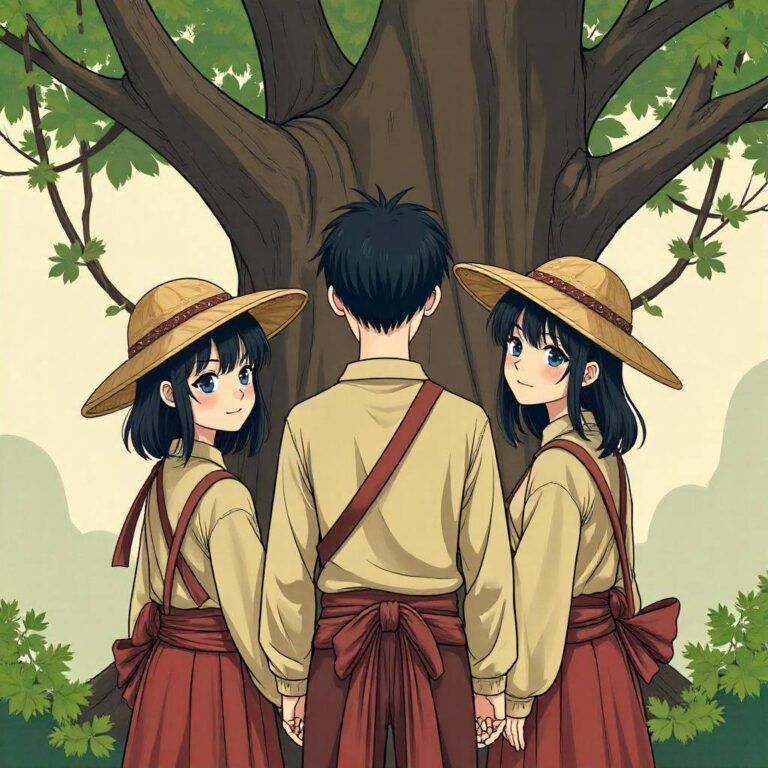Reader’s Question:
Is the Watanagashi ritual in Higurashi: When They Cry some kind of dangerous ceremony where a person has to be sacrificed?
Unraveling the Watanagashi Ritual in Higurashi: When They Cry
As a passionate fan of anime and someone who loves to dive deep into its intricacies, I often find myself
lost in discussions about symbolism and culture around various series. Recently, the Watanagashi ritual from Higurashi: When They Cry popped up in a conversation, and I was drawn in by the mix of folklore and horror. So, is this ritual really a dangerous ceremony where a sacrifice has to happen? Let’s explore!
The Basics: What is Watanagashi?
First off, let’s break down the ritual. Watanagashi, translated as “cotton drifting,” is a festival celebrated in the fictional rural village of Hinamizawa. In the context of the series, it’s depicted as a time for villagers to pay respect to the cotton deity, but there’s more that lies beneath its surface. When I first heard about this ritual, I thought it was just another creepy element added to the already eerie atmosphere of Higurashi. I mean, it’s a horror anime, right? So, naturally, there’s a tendency to associate every strange occurrence with something sinister. However, after some digging (and a little bit of reading), it became clear to me that Watanagashi is actually more nuanced than just a blood sacrifice.
The Cultural Context
To understand this ritual better, it’s crucial to look at the cultural implications and origins. According to the user comment I found, Watanagashi is primarily about honoring the spirits that inhabit cotton. The idea is to take out cotton from old futons and clothing to make way for new materials. This ritual seems to have originated from a time when hygiene wasn’t quite as prioritized as it is today. Now, isn’t that fascinating? I always thought rituals like these were just a way for people to express their devotion in a spooky manner. But it seems that the Watanagashi ritual also had practical implications—that of promoting cleanliness and regular changes in clothing and bedding.
The Dark Side: Folklore vs. Reality
Of course, the series takes certain artistic liberties, and it’s important to note that the darker aspects of the ritual come from myth and folklore. There’s a legend involving gruesome human sacrifices, with tales of people being executed in brutal ways. Yet, the historical evidence supporting such actions is murky at best. This brings me to a realization: sometimes, the stories we tell can morph into something entirely different over time. I mean, think about it! How many times have we exaggerated a spooky tale around a campfire? It’s like playing a game of telephone; words can twist and take on a life of their own. Just like how we might say “I caught a fish this big,” when in reality, it was just a little flounder.
Personal Reflection
As I watched Higurashi: When They Cry, I couldn’t help but reflect on my own experiences with cultural rituals—be it the New Year celebrations back home or the various ceremonies I’ve witnessed during my travels. They often carry layers of meaning beyond the surface. This makes me appreciate the complexity of traditions and how they shape our understanding of community and identity. During my last trip to Japan, I stumbled upon a Matsuri (festival) in a small town. The vibrant colors, the loud drums, and the smell of tasty street food created a lively atmosphere. I found myself thinking: what stories lie behind this celebration? Is there a darker past lurking in the corners of this joyous occasion? These musings make it clear that rituals, whether they’re joyous or macabre, are often steeped in history. They can serve as a reminder of the cultural evolution of communities, much like how Watanagashi showcases the blend of reverence and practicality.
Final Thoughts
In conclusion, while the Watanagashi ritual in Higurashi: When They Cry does have those ominous overtones, let’s not get carried away thinking it’s just about sacrifices. It’s more about the reverence for the spirits of cotton and a nod to hygiene practices of the past. Understanding the roots of such rituals not only enriches our viewing experience but also teaches us to appreciate the narratives woven into the fabric of culture. So next time you find yourself captivated by the eerie tales of a horror anime, take a moment to explore the cultural significance behind it. You might just discover that what appears to be dark and foreboding is often a reflection of deeper traditions and practices. Who knew anime could make you ponder the meaning of cleanliness and respect, right? Happy watching, and don’t forget to keep your old futons in check!



